Wagner, Einstein, and Teilhard
Dr. Rudy Hwa Rudy is an emeritus professor of Physics at the University of Oregon as well one of my one of my senior Wisdom Students, both chronologically (we’ve been traveling this path together for nearly two decades now) and in his recognized eldership in the scientific and Wisdom communities. This delightful blog post seamlessly weaves together his scientific rigor with his passion for music. It’s a delight and a privilege to share it with you here.
~ Cynthia Bourgeault
At a symposium held many years ago on a day between the performances of the third and fourth operas of Wagner’s Ring Cycle, the musical director of the Ring said in answer to a question about Wagner, “Music without Wagner is like physics without Einstein.” That statement struck such a chord in me that I have been exploring its implications ever since. As a physicist I know Einstein’s work more than I do about the works of Wagner and Teilhard [de Chardin]. But my love for music, especially for Wagner’s operas, and my journey in spirituality put me at a place where I can enjoy a panoramic view of all three. My words to describe that view, however, will be inadequate, like any description of something beautiful or profound.

Richard Wagner
Richard Wagner was not just a musical genius but also a unique dramatist. He described the realm beyond worldly experiences through his musical dramas in ways that have never been done by anyone before nor afterwards. He wrote the poetic libretto of his operas himself. His Ring of the Nibelung, which consists of four operas that add up to more than sixteen hours, is conceptually connected to his last opera Parsifal in the context of redemption. The Ring is about the greed for power and the cleansing of that corruptive human inclination by love through self-sacrifice, but the redemptive process is not completed until the fool Parsifal gains wisdom through compassion in the next opera. Parsifal is a mystical journey of deep spirituality described in ethereal sublime music. The transformation that occurs in the five-opera sequence Ring/Parsifal is an outward manifestation of the change in Wagner’s own inner life, at the later stage of which he turned favorably to the Christian belief in redemption through suffering and love. Actually, he was more influenced by Buddhism than by the traditional Christianity ruled by a hierarchical church: he saw the failure of nineteenth-century Christianity in restraining industrial Europe from its greed for power. Wagner used art to rescue religion by creating a musical cathedral on the theme of suffering and compassion in the spirit of the Gospels. He willed that Parsifal not be performed outside of Bayreuth because he did not want this opera that he regarded as sacred to become a theatric amusement. Thirty years after his death Wagner’s family finally authorized its performance elsewhere, and more than 50 opera houses in Europe put it on in the first eight months of 1914 before WWI temporarily ended its universal appeal.
 Einstein is probably best known for his energy-mass equation, E=mc2, the significance of which is transformative in physics. At the root of that equation is the theory of relativity, whose role in revealing the nature of the universe has cosmic and religious implications. In simple terms Einstein unified time and space. Energy and momentum are similarly unified in such a way that mass may turn into both energy and momentum. More difficult to imagine is that large massive stars can warp space-time. Without Einstein’s fundamental contribution to our understanding of nature, cosmologists would not have been able to determine from modern observations the properties of the universe at its beginning when even the notion of space and time is not well defined.
Einstein is probably best known for his energy-mass equation, E=mc2, the significance of which is transformative in physics. At the root of that equation is the theory of relativity, whose role in revealing the nature of the universe has cosmic and religious implications. In simple terms Einstein unified time and space. Energy and momentum are similarly unified in such a way that mass may turn into both energy and momentum. More difficult to imagine is that large massive stars can warp space-time. Without Einstein’s fundamental contribution to our understanding of nature, cosmologists would not have been able to determine from modern observations the properties of the universe at its beginning when even the notion of space and time is not well defined.
Concerning space-time, it is interesting to note that in Act I of Parsifal, the young fool who does not even know his own name finds himself in the forest of the knights of the Grail without feeling that he has trekked a long distance. The wise old man, Gurnemanz, explains to him, “You see, my son, time here becomes space.” It is amazing that Wagner thought of the unification of time-space thirty years before Einstein, though for a different reason. He wanted to lead his followers on a redemptive journey to a realm beyond ordinary consciousness in ordinary space-time. One has to be like Parsifal in not knowing anything to enter the domain that is timeless and of no specific space. It is not self-degradation here to become a fool. In wisdom tradition that means one empties the mind in order to be open to transcendent consciousness. Wagner dared to compose music that represents timelessness on a stage that offers nearly no motion for long periods (in theater time), yet holds the audience spellbound and transported to a realm where suffering is not just feeling of pain, but a part of the kenotic process of redemption.
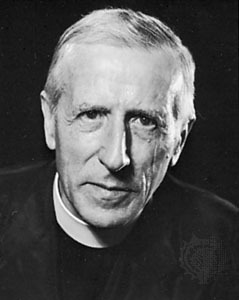
Pierre Teilhard de Chardin
Whereas both Wagner and Einstein were broadly recognized in their lifetimes for their achievements, Teilhard de Chardin, SJ, was forbidden by his Jesuit superiors to publish his anti-establishment writings. He was a paleontologist and theologian, and saw the necessity to synthesize Christian faith with evolution because he did not believe in the literal interpretation of the Genesis story of creation. That did not go well with the Roman Church, and many philosophers and most scientists on both sides of the schism. In his view spiritual and physical evolutions are not in conflict but follow the same movement in consonance with each other, so he unified incarnation and cosmic/biological evolution in his Christogenesis through four phases, which Cynthia Bourgeault calls the four Cs: cosmogenesis, complexifcation-consciousness, convergence, and Christ-Omega. To a reductionist Teilhard’s work may sound as repugnant as what the music of Ring-Parsifal does to a non-Wagnerian. But for one who is on a spiritual quest, the Teilhardian synthesis provides a refreshing alternative to the traditional dogmatic theology; more significantly, it offers a pathway to the mystical field of unitive awareness of the Oneness beyond space and time. That is transformational. It has been suggested that Teilhard is the fourth major thinker of the western Christian tradition, after St. Paul, Augustine, and Aquinas.
Teilhard did not build a bridge between science and religion that leaves the schism as deep as it ever has been. Like the unification of space and time, he amalgamated the physical and spiritual realities such that a seeker from either side cannot find a clear line separating the empirical and the transcendent. But one has to want to seek in order to find what he offers. Teilhard said it better:
You are not a human being in search of spiritual experience.
You are a spiritual being immersed in human experience.
The amazing feeling I get in reading Teilhard’s writing is that he was so immersed in the wholeness that he could move effortlessly from space-time to non-space-time to describe that intimate union at the gut level where the mind is truly in the heart. In his treatise The Human Phenomenon the word God cannot be found anywhere until the epilogue. Yet the universality of the love he envisioned is clear in his statement, “A love that embraces the entire universe is not only something psychologically possible; it is also the only complete and final way in which we can love.”
That’s great, but how do you do that? This question reveals my awareness of my being at a particular point in space-time attempting to do something. Loving in finite space-time will always be contingent. To transcend that one has to love not as an act of doing, but as a state of being. Doing is carried out by the mind; being resides in the heart. In all wisdom traditions the practice is to let go of thinking through contemplation. That is to become like Parsifal, the innocent fool, who responds to suffering. In a loose analogy that compromises the rigor of physics thinking, it is like mass in matter converting to kinetic energy that transmutes into love energy.
With Wagner’s music I can be passionate; with Einstein’s physics I can be dispassionate and explain what I know. But with Teilhard’s theology I can do neither. It requires both thinking and believing, which are hard to do simultaneously, much like particle-wave duality. Indeed, the Teilhardian synthesis is just like quantum physics, that unifies seemingly incompatible classical properties. I admire his passion and ability to use love energy to integrate his profound thoughts and experiences into one coherent description of the Wholeness.
Wagner, Einstein, and Teilhard: all three of them were visionaries, using different languages to express different yet similar transformative experiences. Feeling, thinking, and believing are what mathematicians would call orthogonal functions, which all of us have in varying degrees. The world has been enriched gloriously by what these three giants have shown us on how these three functions can harmoniously be combined to beautify the Whole.

Rudy Hwa – Eugene, OR


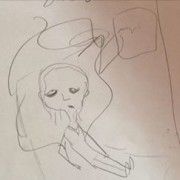
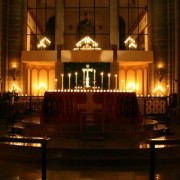


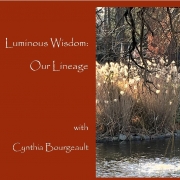


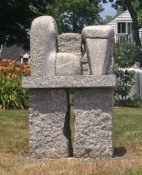


How I like this writing an how it resonates with my believes and convictions. I feel so wonderfully about someone writing about Christianity and other religions on equal terms and comparing them with great respect. Thank you for that Cynthia. I have always had difficulties with adhering to one particular religion, but I connect to all spiritual traditions and their seeking for unity and compassion. In these writings I find resonance.
I loved this simple,but profound phrase: “Doing is carried out by the mind; being resides in the heart.”
When I first learned about string theory many years ago, that, in a nut shell, all reality is best explained as a grand symphony being played or a great story being told, a link was opened to many of us every day people between science and theology. “For the word of God is alive and active. Sharper than any double-edged sword, it penetrates even to dividing soul and spirit, joints and marrow; it judges the thoughts and attitudes of the heart.” Verses like these and many others took on vastly new meaning. As the unity of the whole comes more and more into focus, diversity (paradoxically) becomes more and more obvious. Non-duality is the only way to hold it.
There is a clear connection between contemplation (the descent towards unified consciousness), and the journey of science over the past 300 odd years, (the descent towards the unified field). To understand that this spoken word of God, this Grand Symphony (of which everything is a note), this Great Story (of which everything is a word) has, is and will be taking place over many billions of years presents an awesome picture of reality… everything seems to be converging towards something.
Having begun to awaken, I’m continuing with my degree in psychology next year and I look forward to growing in my understanding of how this particular school of thought sits within the whole. How might we better communicate and share this new way of seeing, experiencing and being within reality amidst an old, deteriorating perception in which the illusion of separation continues to dominate, at least in the west? How might those on the perceived fringes shine new light on that whole as we continue to awaken to the truth that the “centre is everywhere, the circumference nowhere”? How might the very structures of hierarchical explanations and perceptions of reality, of God, ourselves and our neighbours, which permeate not just religion but all of society (in education, community, science, work and economics) be dismantled in such a way as to allow for the journey towards the unity of the whole to benefit from the paradoxical vastness of diversity that journey continues to reveal (at a truly mind-blowing rate)?
Mathew Wright mentioned recently Thich Nhat Hanh’s comment, “The next Buddha will be the Sangha. The age of the hero saviour is over.” We’re slowly awakening to the truth that we’re a network and none of us come to anything without everyone else. One for all and all for one is sanity. I look forward to seeing how those I’ve worked with for the last 13 years who most of the time have no place within the current “whole” apart from sentimentalist cliché, whose “word” or “note” has yet to be truly heard by the rest of us, not because they aren’t central and therefore as intrinsic as anyone else, but because the old perception was/is deaf and blind to them. We’re still a long way from understanding just how radically different reality will look with the massive shift in perception God has gifted the world through people like Einstein and Teilhard. I wonder if Jesus’ primary motive for hanging out with those on the fringe was his perception of their hidden revelation… Pennies are dropping like rain every day for more and more people. So glad to be on board 🙂 I’m learning so much 🙂
Craigus. Thoroughly enjoyed ur response !!!
Dee
I’m glad 🙂 My responses are a lot more positive these days 🙂 … Everything’s a lot more positive these days 🙂 It’s amazing how simply standing in a different place changes the terrain.
Thank you for your inspiring words. In citing Thich Nhat Hanh’s comment that the “next Buddha will be the Sangha” you also reminded me of a few other things he said in his “Living Buddha, Living Christ” book… in particular, that for many people, rather than try to enter through the door of the Father or the Son, it is “safer to approach God through the Holy Spirit than through theology.”
It was also Joachim of Fiore’s intuition that after the age of the Father (which lasted through periods of the Old Testament, until the birth of Christ), came the age of the Son (which would last until the decline of the Church’s power and influence), followed by the age of the Holy Spirit, in which wisdom and access to the Transcendent would become increasingly available to all. Perhaps we are fully in this third age…
This seems a succinct explanation of the truth of universal unity. Reading The Phenomenon of Man in my 20’s helped direct my search, or response to being searched, so that I can see us all swimming in the ocean of God’s love energy, which, in my mind becomes millions of vibrating strings, and in my heart becomes the Great Heart of Loving kindness. There seems to be much emphasis on the heart lately, and there is much unity in the Spirit as regards that. I very much liked this blog. Ruth Storer, Sanders, AZ. USA.